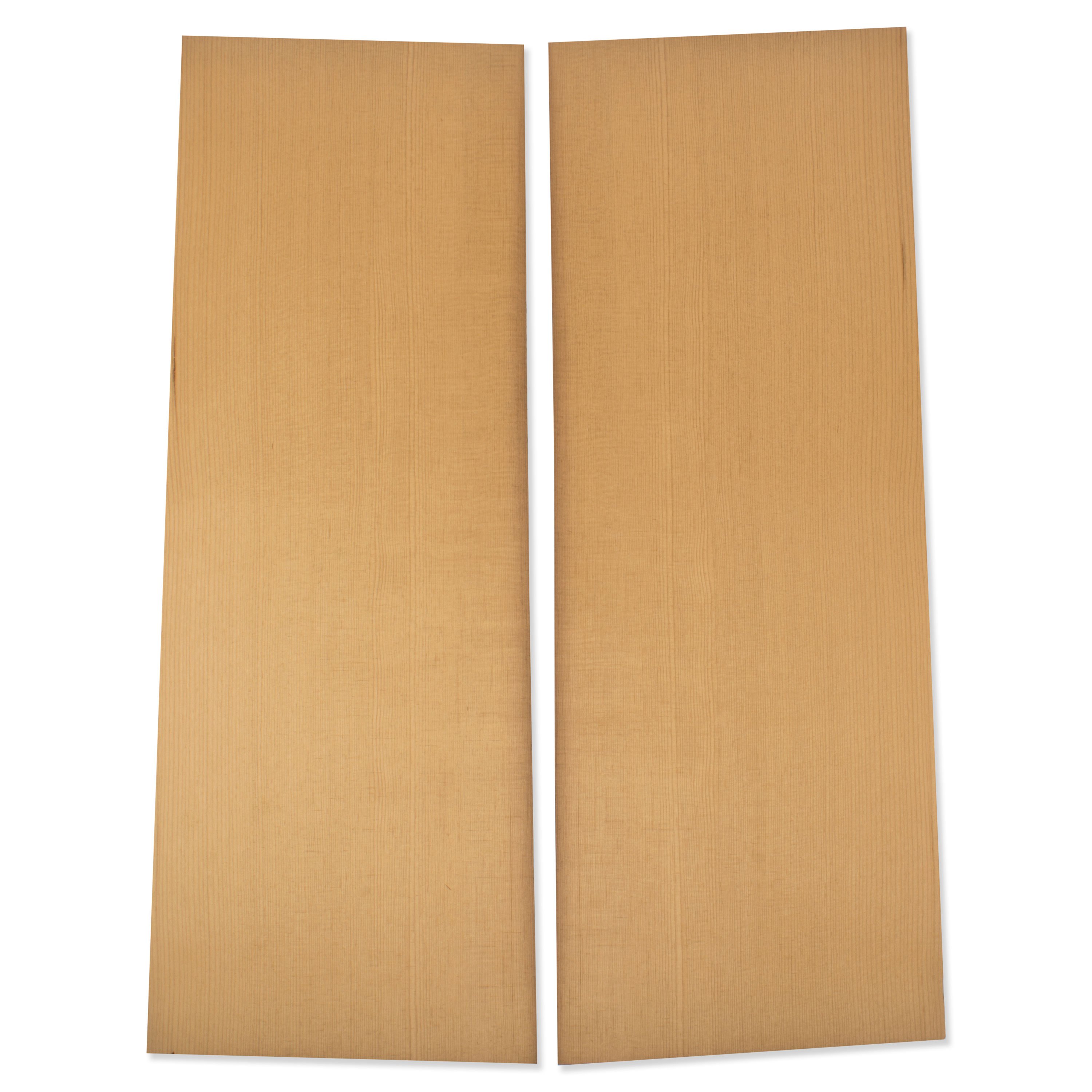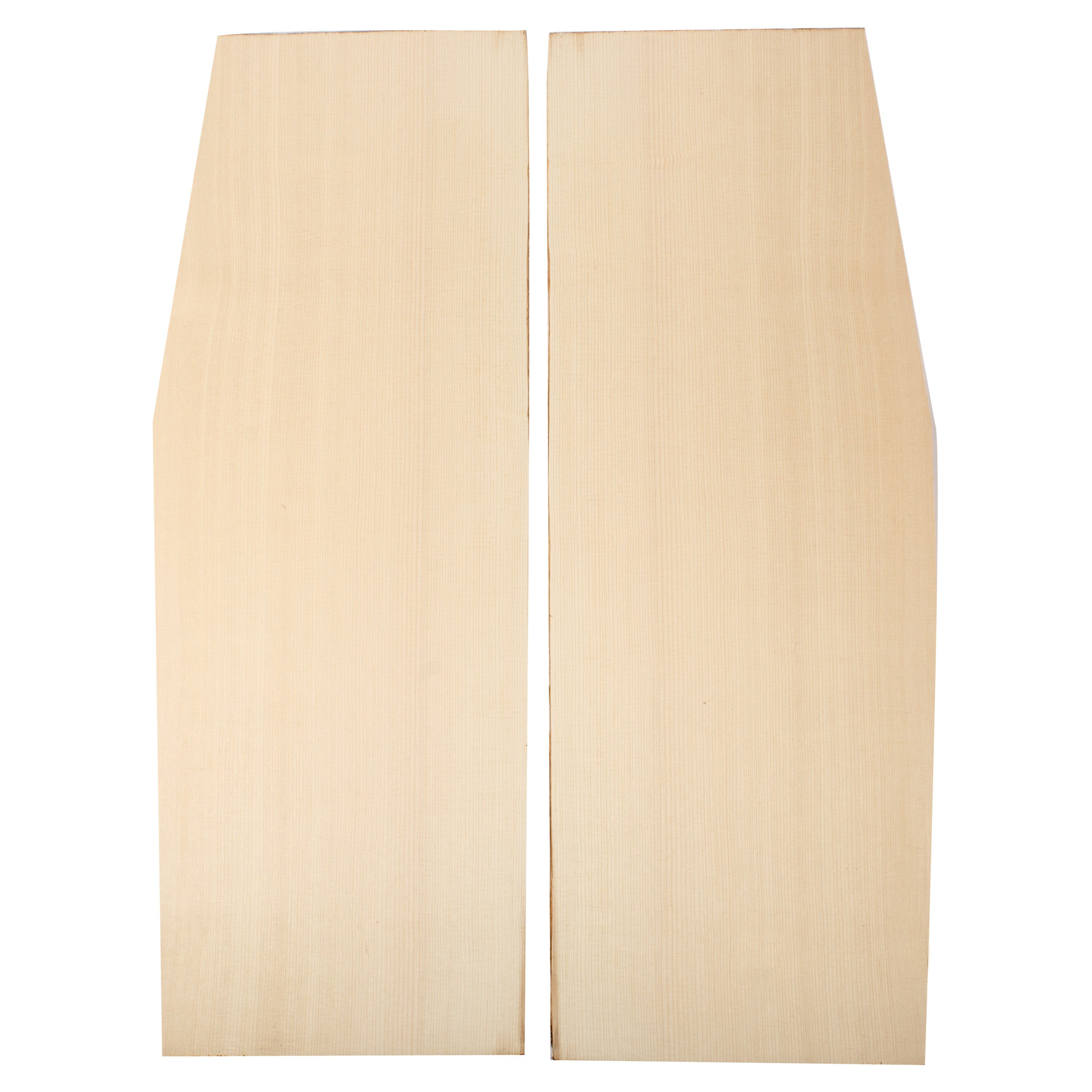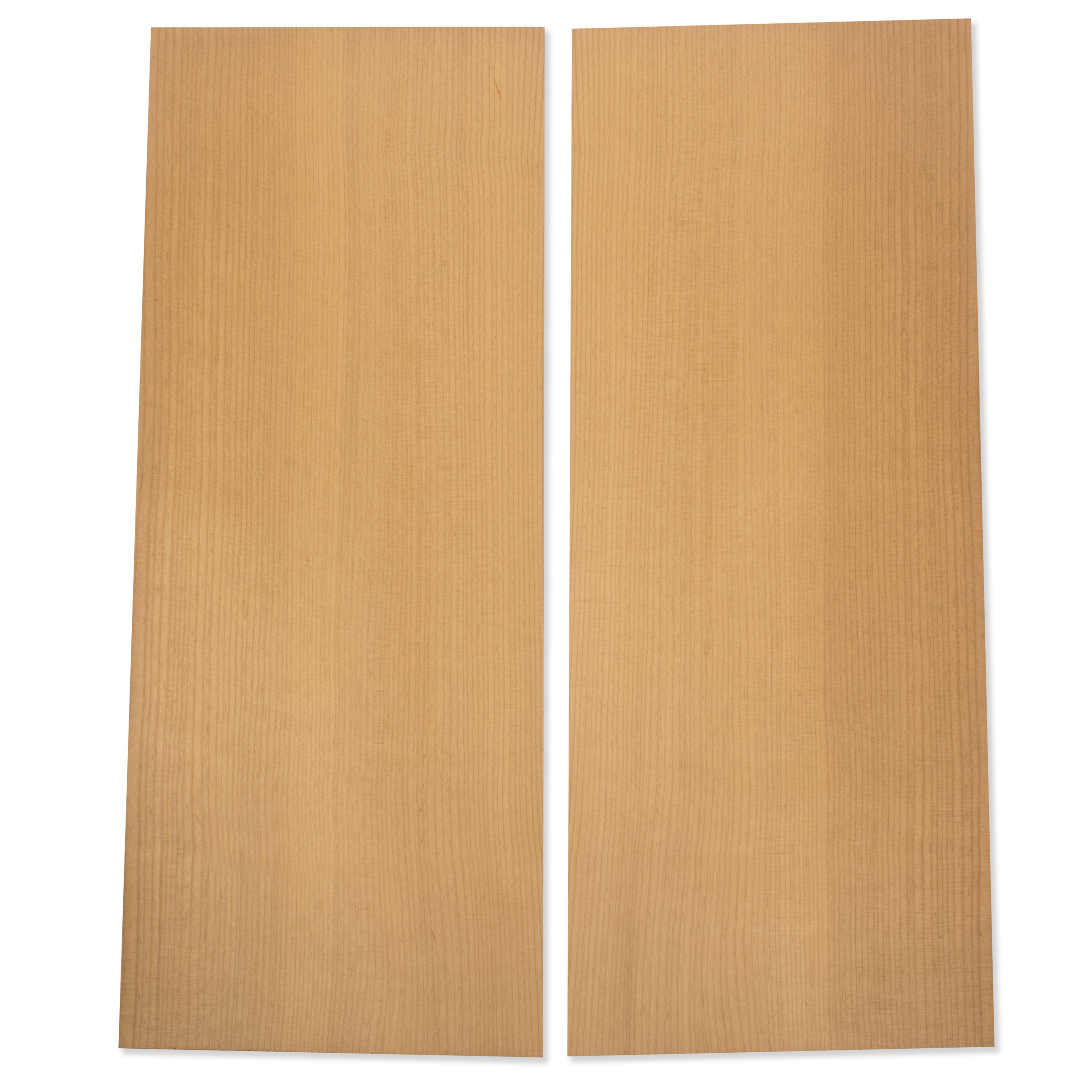Torrefied Old Growth Red Spruce Soundboard for Dreadnought Guitar
We found the wood time machine!
Do you want your new guitar builds to have the sound and feel of an amazing, well-played vintage guitar? Torrefied woods give new guitars the properties of seasoned vintage instruments and that rich, booming "played-in" tone. Normally, it takes decades to achieve this kind of tone and performance.
The torrefication process involves carefully heat-treating the wood in an oxygen-free kiln. The wood actually changes at the molecular level—the end result is new wood that has the same cell structure of well-aged decades-old wood. The change is notable: builders have reported improved tap tone, greater strength, and lighter weight.
Amazing to build with
Not only do these tops sound great but they're also more dimensionally stable than untreated fresh wood. It's less prone to cracking, splitting and warping, not only when building, but over the life of the instrument.
If you warranty your instruments, you'll love the extra assurance of knowing you're not as likely to see complicated repair work that's a result of humidity or temperature changes.
Don't confuse old growth with new growth
Most of the Adirondack Red Spruce you'll see on the market is from new, or second growth trees. While these sets are very nice, they grew faster, under less stressful conditions. As a result, many times old growth sets are generally stiffer and have more resonant tap tones.
Each old-growth log is cut from tightly managed private land or naturally felled trees—this is why they are in such short supply.
Build with the best, most vintage sounding spruce today
Each top is a bookmatched quartersawn set. When joined they're easily large enough for a Dreadnought guitar.
- Each half is approximately 8-1/2" x 21" (216mm x 533mm)
- Sanded sets are thickness-sanded to 0.125" - 0.130" (3.18mm - 3.30mm)
- Unsanded sets are approx 5/32" (4mm) thick, ready for thickness-sanding to your own specs
Use our grading system to choose your soundboard:
Color: Higher grade soundboards have more consistent color (color affects the instrument's appearance only, not its tone).
Grain straightness: Higher soundboard grades have straighter, tighter, and more uniform grain. While closely spaced grain has been traditionally favored, luthiers have found that wider grain can produce very good tone.
Quartersawn grain: The higher the grade, the more closely quartersawn the wood. Perfectly quartered wood is more dimensionally stable and moves proportionally with changing temperature and humidity environments. This helps to ensure structural integrity and resists cracking better than other types of cuts.
Grain run-out: Our soundboards are sawn from split billets to reduce the amount of grain "run-out," caused by a twist in the tree. By splitting the log, the twist is followed when sawing. Higher grade soundboards have less run-out.
Origin and drying: Our soundboards (unless otherwise noted) are from western North America, and have been kiln-dried and stored in a climate controlled environment.





